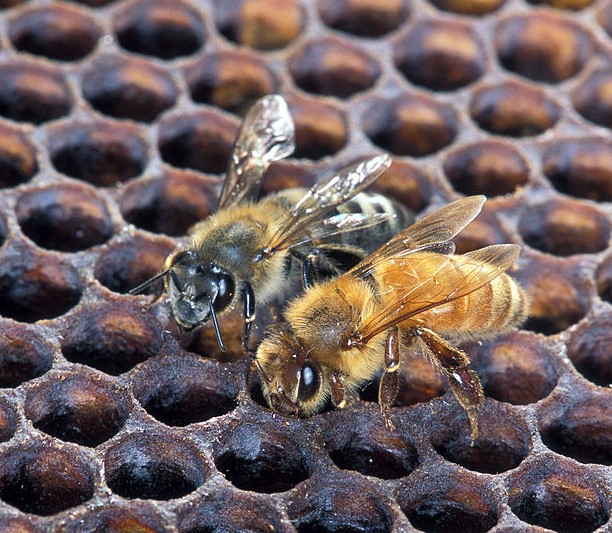Tiny lasers stationed at honey bees’ hives will disable and kill varroa mites in experiments aimed at defeating the parasitic pest ravaging bee colonies around the world.
Devising a cheap tool for beekeepers to protect bee colonies without using pesticides is the aim of scientists led by Dr Francesco Merola and Professor Cather Simpson at the University of Auckland’s Photon Factory, in a collaborative project with New Zealand’s Plant & Food Research.
Varroa mites (Varroa destructor) cling to bees to enter hives but tiny lasers stationed at beehive entrances can target the mites and prevent them from infesting and critically damaging the hive, the scientists believe.
“Our goal is to free bees to do their important agricultural work by allowing beehives to thrive again, to be more resilient, healthy homes for bees,” says Merola.
“It’s an ambitious project which will make a difference all over the world if we’re successful,” says Simpson.
Varroa mites feed on honey bees, larvae and pupae, spread disease, and can cause bee colonies to collapse. As bees have a critical role as crop pollinators, Varroa mites represent aglobal threat to food security.
Merola, of Waipapa Taumata Rau, University of Auckland, will test how different laser blasts affect bees and mites, working in a containment laboratory at a Plant & Food Research facility in Hamilton.
Merola previously worked at Engender Technologies, a University spin-off founded by Simpson that sorts sperm by sex for the dairy industry.
The University’s Photon Factory is collaborating with Plant & Food Research’s Bee Biology and Productivity Team led by Dr James Sainsbury. Industry advisers include representatives of Apiculture New Zealand, Comvita, and the Māori beekeeping industry.
A $1 million “Smart Idea” grant from the Ministry of Business, Innovation and Employment’s Endeavour Fund is supporting the project, which aims to create a device for New Zealand and abroad.
In a five-year plan, research and development are slated to take two years, followed by commercialisation. Challenges will include creating a device easy to fit to the hive which bees are happy to move through.
Advanced optical spectroscopy methods are key techniques the science team will use to understand the structures of key biochemical components in the bees and mites, including proteins, lipids, and pigments.
Source: University of Auckland












